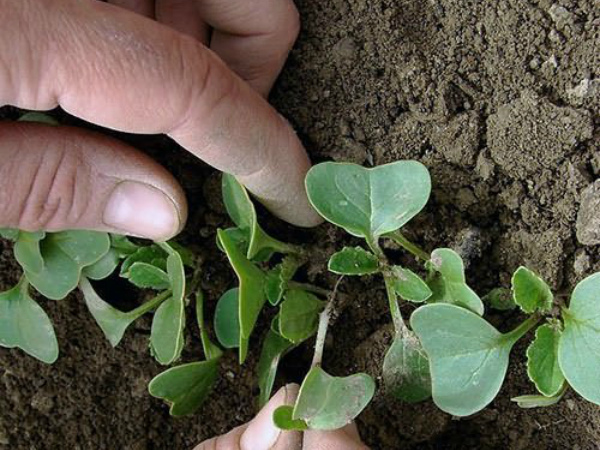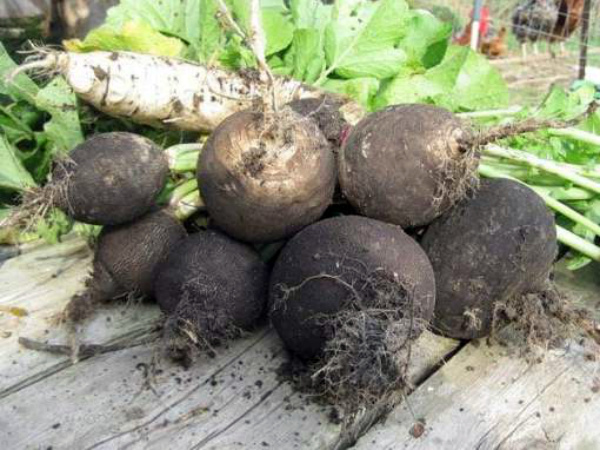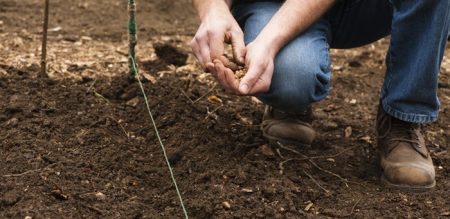When is the best time to sow radish outdoors
Content
When to plant in the ground
Radish belongs to cold-resistant plants - its seeds germinate without problems at a temperature of + 3–5 ° C, and the seedlings are able to withstand a temperature drop of up to + 3–4 ° C, and even short-term night frosts, which often occur in spring. Therefore, the answer to the question “when to plant radish in open ground” is unambiguous: as soon as the snow melts and the soil warms up to the above temperature.
Seeds of summer varieties are recommended to be sown in spring, from late April to late May. Early varieties are more resistant to cold, so they can be sown in the last decade of April. The medium-ripening varieties are sown in May. The most comfortable temperature for growing radish is + 18–20 ° C. It is desirable that such a degree be established in about 1–1.5 weeks after germination. Based on this information, it is easier to calculate the most successful landing dates.
For autumn and winter consumption, a winter radish is grown. The time range from mid-June to mid-July is considered optimal for sowing, but the characteristics of each variety must be taken into account. The average ripening period for winter root crops is 100-110 days. Knowing the peculiarities of the climate in your region, it will not be difficult to calculate the most appropriate time for sowing winter crops. To determine the planting date more accurately, gardeners use the lunar calendar - a radish planted with a waning moon grows faster and better.
The soil
Radish is not very demanding on the soil, however, the yield and taste of root crops largely depend on its composition. The best soil for radish is fertile, rich in humus and humus loams, or sandy loam soils. For successful growth, root crops need constant but moderate moisture, as well as neutral or slightly alkaline acidity of the earth. If the soil in your area is acidic, then it must be limed.
Radish is grown from seeds, which are sown in prepared soil. Since it is customary to plant summer radish varieties very early, the preparation of the garden is carried out in the fall. The site is dug to a depth of 15–20 cm, all excess debris (roots, weeds, stones, lumps) is removed, organic fertilizers are applied at the rate of 1 bucket of compost or humus and 1 glass of ash for each 1 m². Fertilizers are mixed with the soil, the site is leveled and so left until spring.
If the radish is supposed to be planted on a site where organic fertilizers were applied last year or 2 years ago, then you just need to dig up the soil and add a little mineral mixture (30–40 g superphosphate, 25–30 g nitrate) - no more organic matter. It is advisable to pay attention to the predecessors and neighbors of the radish. It should not be sown after any cruciferous crops, horseradish, carrots.
Beans, tomatoes, cucumbers, zucchini, corn are considered to be successful predecessors for the culture.Peas planted nearby, as well as any pumpkin crops, has a beneficial effect on the radish.
How to plant in open ground
Before planting seeds in the ground, you need to calibrate and prepare them. For planting, the largest (2 mm) specimens are selected, soaked for a day in a solution of potassium permanganate or saline solution (50 g / 1 liter of water). Then they are laid out on cloth or paper, slightly dried, after which they can be sown in the ground.
The bed prepared in advance is slightly loosened and furrows are made 2-3 cm deep at a distance of 25-30 cm. If the variety is small-fruited, or the roots go deep into the depths, like a daikon, then a smaller distance in the row spacing is permissible - 15-20 cm. Then the seeds are laid out in rows in nests 3-4 pieces at a distance of 8-10 cm, after which the furrows are covered with earth. If the soil was not moistened before planting, then the rows must be watered.
Some gardeners plant radishes in single nests along the edges of the beds or between cucumbers, pumpkins, until they are unraveled - this planting option is also possible. The first shoots will appear in about a week. When the shoots form two true leaves, the nests are thinned out, leaving one of the strongest shoots. The soil in the aisles is loosened and weeded, and the row is slightly huddled.
Planting winter varieties
Growing winter radish is a great opportunity to consume this wonderful product throughout the winter. Ripe roots tolerate frost on the surface and temperatures below -5–6 ° C. Such resistance of the crop to cold allows you to harvest late harvest, and thereby prolong its preservation. In addition, winter varieties have many advantages over summer radishes - they are less susceptible to damage and rot, winter roots are more curative, and are also rather large in size (300-600 g).
Sowing radish of winter varieties should be carried out using the same technology as summer, however, there are some features, on the observance of which the yield and size of root crops depend:
- a plot for winter radish must be prepared in spring;
- the distance between the seed nests should be increased to 15–20 cm, taking into account the size of the root crops.
It has already been said about when to sow winter varieties, but it should be noted that these are average periods that can vary depending on the climate and varietal characteristics.
In temperate and southern climates, it is better to plant seeds from mid-July, since winter in these regions comes later, and plants can have time to start up arrows. Where summer is not hot, and frosts come earlier, you can sow in the second half of June. For early ripening varieties, the optimal time will be the beginning of August, but sowing should not be carried out later than this date, since the roots will not have time to ripen and gain the desired weight.
Winter varieties are less demanding to care for. They do not need abundant watering - during the season it is enough to moisten the garden 3-4 times, and then if there is no rain. Harmful insects, as a rule, are no longer active at this time, so there is no need to process the plants. Winter radish is fed with small doses of mineral fertilizers, but feeding should be stopped after 3-4 weeks. To avoid nitrate buildup, a dusting or ash solution can be used. Winter radish gives high yields - if it is possible to collect 20-30 kg from 10 square meters of area from a summer garden, then when growing winter varieties, the yield increases to 40-60 kg from 10 square meters of a garden.
Video "Sowing radish in the ground"
From this video you will learn how to sow root seeds in open ground correctly and in what time frame.






